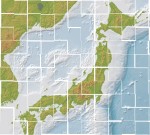All medical device companies that are interested in the Japanese medical market need to determine the most effective way to either enter Japan or expand their presence there. However, Western device executives often try to enter or expand in Japan without first studying the dynamics of the Japanese medical device market. There are many ways for foreign executives to enter Japan, but the key is to determine the best strategy for your specific product, budget and time horizon.
When developing a strategy for a medical device product in the Japanese market, consider the following three key issues:
- #1: Market research must be conducted prior to product registration
Oftentimes, the international sales and marketing executive within a device company will request that their regulatory professionals register the device in Japan without any further information about the product’s prospects for sales or growth in the Japanese market. Conducting serious independent research on the Japanese market for each product, including an analysis of the current market size and expected growth rate, is a crucial step that must take place prior to the decision to register a product. Many medical device companies spend a lot of money registering their product, only to find out that there is limited or no demand for that product in Japan.
For example, if a device company conducts the proper market research and determines that the potential market size for the product in Japan is $10 million in five years and the registration will cost $300,000, then the investment may make sense. However, if the company neglects to conduct this research and believes that the Japanese market for the product should be large simply because the product sells well in the United States or Europe, then it is difficult to say whether a $300,000 investment for product registration in Japan will be worth it.
- #2: Ensure that Japanese key opinion leaders (KOLs) are giving honest feedback and are not double agents
The opinions of Japanese KOLs in the appropriate field for each medical device should be included in the initial market research. However, simply asking for the opinions of Japanese doctors after giving a product demonstration is often not enough to gauge their true thoughts. Japanese KOLs are almost always very polite to foreigners and will give positive comments about the medical device product. Therefore, it is a good idea to have a local Japanese executive conduct extensive, lengthy in-person interviews with the KOLs in their native language in order to obtain their genuine feedback.
Some Japanese KOLs may offer to sign a yearlong contract with a foreign device company to help promote the benefits of their product to Japanese doctors and other relevant figures prior to the product being registered. However, there is a significant risk that the same Japanese KOL could sell key information about the device to a Japanese manufacturer that wants to copy the product. Some Japanese KOLs have been found to be double agents who have sold a foreign device company’s intellectual property to Japanese competitors for large sums of money without the foreign device company knowing about it. It is essential to conduct thorough due diligence before signing up Japanese KOLs.
- #3: Maximizing reimbursement is critical for the success of product sales in Japan
Japan has universal healthcare for all its citizens, and almost all devices are only bought when the product or procedure is reimbursed. Despite recent cuts by the Japanese government, the reimbursement system is still very good. Thus, it is crucial to evaluate the cost and timeframe for obtaining maximum reimbursement for a medical device when determining whether to enter the Japanese market.
One important point to note is that if the reimbursement code in Japan for an improved device is associated with an older existing technology, the reimbursement amount may be too low for the company’s product sales in Japan to be profitable. While higher reimbursement codes can be set for newer technologies (codes C1 and C2), getting this level of reimbursement can be very difficult and require a lot of time and negotiation.
In addition to conducting serious market research, finding trustworthy Japanese KOLs and obtaining their truthful feedback, and developing the best reimbursement strategy, there are also many other key factors that will help to determine whether a device company will be successful in Japan. For example, many Western executives are very direct and impatient, and are looking for fast results. On the other hand, Japanese executives tend to be less direct, move slowly and thoughtfully, and look to build a strong long-term foundation that is set up appropriately. For the Japanese, gaining market share is oftentimes just as important as quick profits.
Strategies for Market Entry
Once a Western medical device company understands some or all of the issues outlined above, there are three main options for how to enter the Japanese market. Each option has its own advantages, disadvantages and timeframes according to a medical device company’s specific situation. Please note these options have been somewhat simplified to make the main points clearer.
Option 1: Find and sign up a Japanese distributor and let this distributor handle everything
The first option is for foreign device companies to conduct very little or no in-depth market research before signing up a Japanese distributor or partner, and then have the distributor register the product. In this case, the device company may not ever comprehend the dynamics of why their product takes so long to register or why their sales are increasing or decreasing in the future, since they never conducted any independent research on their own.
In this scenario, the Japanese distributor will almost always pay for the product registrations (and perhaps the clinical trials as well), and they will “own” the registrations. If the distributor does not perform well and the foreign device company wishes to switch to a new distributor, the foreign device company may have to pay the original distributor a large amount of money to transfer the registrations to the second distributor. The original distributor may even refuse to cooperate to make a friendly transfer of the registrations via a buy-out, in which case the product will have to be registered again from scratch.
In addition to the cost and time required to re-register, the product may be off of the Japanese market for a period of time. When this happens, it is possible that competitors will spread the news that the product cannot be sold in Japan until the re-registration process is complete, and they could tell Japanese purchasing managers that the foreign device company is an unreliable supplier. This poses a challenge to foreign medical device companies, as they may need to fight to regain their old market share.
The advantage of this strategy is that the initial upfront costs will be low.
Then employing Option 1, it may take 26 months to get a medical device on the Japanese market. This includes eight months to sign up the Japanese distributor, 12 months to register the product (assuming no clinical trials are needed), and six months to obtain reimbursement.
Option 2: Determine the best strategy after conducting an in-depth analysis
The second strategy medical device companies can employ is to conduct their own market research and analysis up front, and then decide the best strategy to maximize their business in Japan. If a device company spends $100,000 upfront in Japan to better understand product demand, selects the right KOLs, and develops a realistic strategy to obtain registration and reimbursement, in most cases, this market information will help them determine next steps.
Using such research, if the market potential is large, the foreign company may decide that they should register their product independently of the distributor or make an investment in Japan. On the opposite side of the spectrum, if the market size is very small, then Option 1 may make more sense. Finally, if the market size and the registration process is still not clear after the research is conducted, the company may want to delay entry or rule out Japan altogether.
The timeframe to implement Option 2 will generally take about four months longer than Option 1, with the extra four months dedicated to market research on the key topics discussed. Thus, four months for market research plus 26 months for the steps in Option 1 equal a total of 30 months to get a product to market. This timeframe assumes that the registration will occur only after the distributor agreement has been completed.
Option 3: Maintain control of the product registrations and reduce time to market
The third strategy is usually applied only when the medical device company is reasonably certain that the market opportunity is fairly large, and hence wishes to purse the opportunity by doing more work on their own, including registering the product and keeping control of the registration. This option is the most expensive, since the device company will need to conduct the initial upfront market research, in addition to paying an independent third party DMAH/MAH to register their product.
There are two main advantages to pursuing Option 3. The foreign device company will own and control their product registration in Japan. Therefore if they need to terminate their original Japanese distributor for any reason, they can do so easily and switch to a second distributor without disrupting their business in Japan. If the foreign medical company decides to register via an independent third party DMAH/MAH in Japan, they can simultaneously conduct the product registration while finding and signing up a distributor. This reduces the timeframe to get a product on the market.
Thus, Option 3 requires four months for the upfront market research, eight months for the distributor search, four additional months for product registration (assuming the time spent for distributor search will be used for product registration as well), and six months to obtain reimbursement. This will total to 22 months, which compares favorably to Option 1 (26 months) and Option 2 (30 months).
If the company decides to open their own office in Japan, they can implement Option 3, and once the products are registered by the DMAH/MAH, they can transfer the registrations to the local office.
The downside to Option 3 is that the device company must pay a lot of money upfront (significantly more compared to Option 1 and 2) to get on the market sooner. Thus, the device company needs to determine the value of getting on the Japanese market earlier versus the significantly higher upfront costs. In addition, if the foreign device company decides to set up their own operation in Japan, doing so will not be cheap.
Japan will continue to be a large medical device market. Ten years ago, many foreign device companies feared the tough regulatory pathway and unique business culture in the country, and thus flew directly to China where the Chinese CFDA and overall market were easier to crack. Today, many device companies are finding more downsides to China: Registration has become much more challenging, many Chinese device companies are copying products, and the country is favoring its own domestic medical device business by implementing a number of measures to favor local device production. As a result, more Western device companies are coming back to Japan. This makes it all the more crucial for these companies to take the right steps to understand the Japanese market in order to determine the best strategy for their product in Japan.






